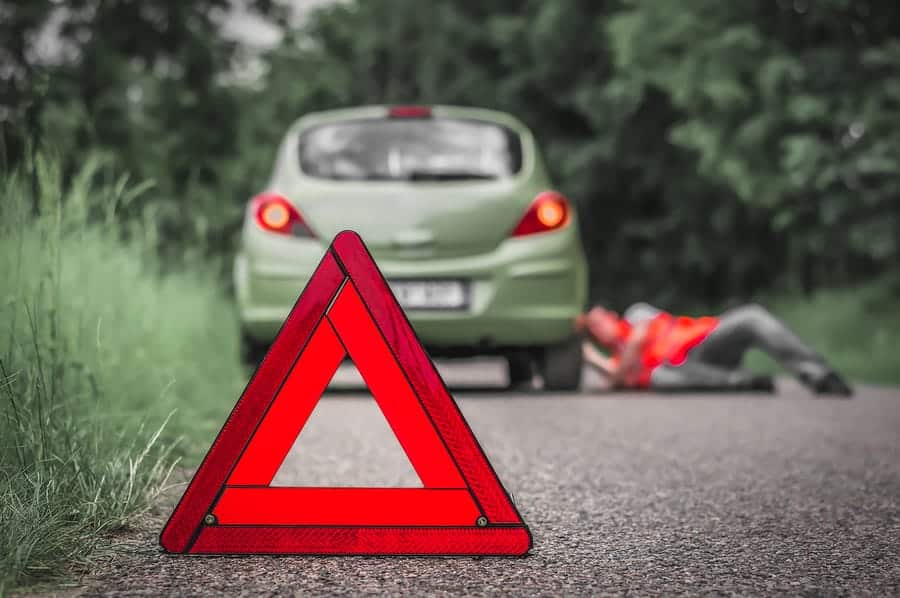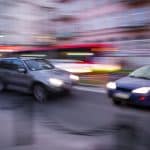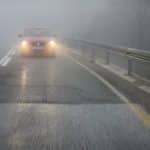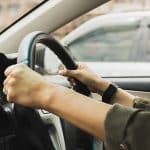
Being in a car can often give you the illusion of protection and invulnerability. You’re so separated from the outside world you can forget the more pertinent realities of the situation. Many people even drive their cars with warning lights lit up on the dash, or other dangerous symptoms. However, whether you know it’s coming or it arrives like a bolt from the blue, the last thing you want to deal with is a car breakdown.
Of course no car is immune from the dreaded breakdown. So what should you do if your car becomes inoperable when you’re out on the road?
Table of contents:
- Before You Set Off on the Road
- If You Do Unfortunately Breakdown
- Breaking Down on the Motorway
- Problems on a Smart Motorway
- Advice for the Most Vulnerable Situations
- Calling for Help
- And Finally – After the Fix
Before You Set Off on the Road
Fail to prepare and prepare to fail as the old maxim says – and it’s wise to consider that you might break down one day. Be ready for the unfortunate occasion when you do stop out on the road, and you can make things a whole lot easier for yourself with the following steps:
Get breakdown cover – and if you’re going abroad then you might even need it more – so check the policy.
Regular services and check-ups – will reduce your chances of breaking down on the road.
Phone charger – in the car could give you that battery boost when you need it most, to contact services and friends.
Keep the number – of your breakdown provider somewhere safe. We’d suggest on a sticker in the glove compartment so you won’t miss it.
Winter victuals – cold weather season? Put some chocolate, a blanket and a few big jumpers in the back of your car to warm up your wait for help in an emergency.
Walking shoes – could make a big difference if you have to hike a couple of miles to the nearest emergency phone, or to simply get reception on your mobile if you’re somewhere remote.
Reflective jacket and waterproof – as these special clothes will help keep you both dry and visible when you’re out of your car – for whatever reason – by the roadside.
Warning Triangle – you’ll feel a lot safer when you’re marooned in poor light with a warning triangle marking your position. It can help stop a bad situation from turning much worse.
If You Do Unfortunately Breakdown
Should the unthinkable happen then remember it’s not the end of the world. Some instant advice to help includes the following steps:
Pull over – if you have enough power, try to get the car to a safe space that’s visible, not on a bend and well lit.
Lights – once you’ve reached a stop, put the hazard warning lights on, and if you’re in the dark then turning on the sidelights will give other drivers extra warning.
Quiet roads – in quieter, slower roads you may want to stay in the car. However, it’s still advisable to place your warning triangle around 50m behind your car to give other drivers the heads-up.
Bigger roads and dual carriageways – now is the time to put on the high visibility coat and get away from the car, standing up a bank or as far away from traffic as possible.
Call for assistance – and finally – call someone. Hopefully you have cover, but it may be the case you can call a friend or perhaps even a local breakdown service.
Breaking Down on the Motorway
As you would expect breaking down on a motorway can be a more than nerve-wracking experience. Make sure you avoid danger with the following precautions and actions:
Car misbehaving? It may be smart to leave at the next exit or pull into a service station as soon as you get the first sign of trouble. If not go for the hard shoulder straight away.
Go for the phone – try to stop the car as near to an emergency phone as possible. They are usually situated at one mile intervals, so with slow down time and lane changes you may be able to spot one as you move towards the hard shoulder.
In the event of power loss or seizure – then pull over into the hard shoulder as soon as you can, and turn your wheels to the left too, ensuring that your vehicle won’t be propelled back into the road if another car hits yours.
Leave the warning triangle – there’s no point putting this out on the motorway and endangering yourself. And even if you’re an expert mechanic, don’t try to repair your car. It’s simply too dangerous.
Get everyone out of the car – and away from the crash barriers, standing up the verge. Don’t worry about the cold or poor weather. You need to be out of the car. However pets are safer in the car as they will probably get spooked and could potentially run out onto the motorway.
Make that call – either via the emergency phone or on your mobile. Let the police know about the danger. They have motorway units specially trained for this kind of eventuality and will get you back to safety in no time.
Problems on a Smart Motorway
There’s no hard shoulder on smart motorways – and you’ll have to be quick to act. Ideally you’ll maintain power until you can reach an emergency refuge area (ERA) where you must use the SOS phone to contact the regional control centre both when you stop and when you leave.
However, if you can’t get to the ERA, follow these steps:
Try to get the vehicle off the main carriageway – and onto a side road at your earliest opportunity.
If you do have to stop in a traffic lane – you’ll need to turn on your hazard lights immediately. Try to get over to the left hand lane without endangering other road users.
Get out of your car – if you are in the left hand lane, exit the vehicle via the passenger side, climbing over the seats and get some distance from the car behind the barrier.
In the worst case scenario where you’re stuck in a lane – put on your seat belt and hazard lights.
Whatever lane you’re in on the smart motorway – call the police immediately and notify them of your position.
Advice for the Most Vulnerable Situations
Sometimes in a breakdown situation it can seem like all the odds are against us. Hold on, stay calm and take in these advice points:
If you are disabled – and you can’t follow any of the steps in the other sections, then stop the car. Turn on your hazard lights and call the emergency services or the police as soon as possible.
Dangerous individuals – if someone is making you feel worried or anxious then get back into your car using the passenger side door. Lock all the doors and do not leave your car until you feel that all the danger has subsided.
Calling for Help
Assuming you’ve followed our other advice and managed to get your car to a safe spot, then the next step is to call the emergency services or the police:
Motorway calling – even if you have a mobile, we’d still advise you to use the emergency phones, which help give the operator your precise location, allowing the services to find you as quickly as possible.
Prominent features – use distinguishing features such as nearby pubs, businesses or landmarks if you’re on the mobile phone. Motorways have plenty of signs that will guide an operator to your location and even smaller bridges have identification numbers on the back, which can help you get found.
Mention your passengers – young children or vulnerable people in the car? Tell the services, as this could get your call prioritised ahead of other people.
And Finally – After the Fix
If you’re lucky enough to get a repair by the side of the road and don’t need a tow then remember to get up to full speed by driving along the hard shoulder to get yourself up to full speed. Make sure you check the blind spots before rejoining the road and be careful.









.png)